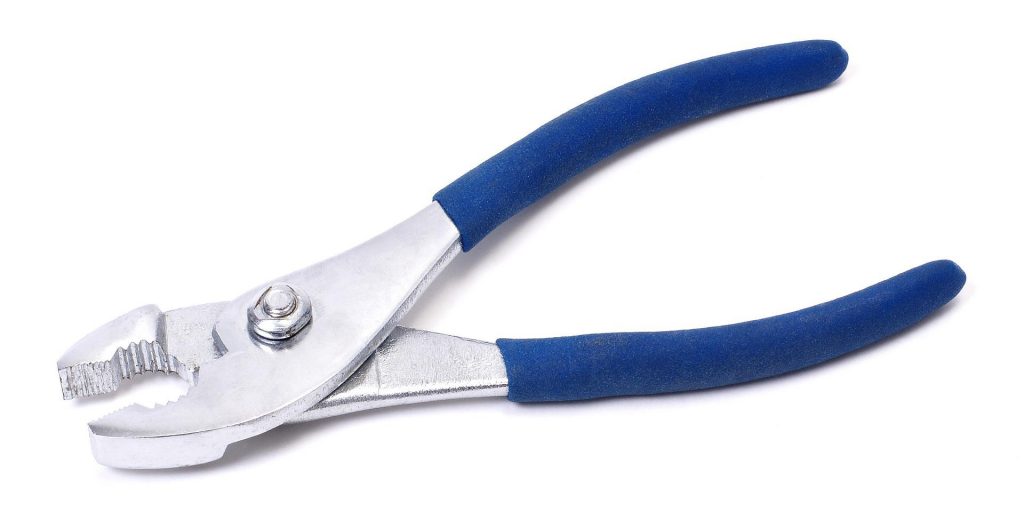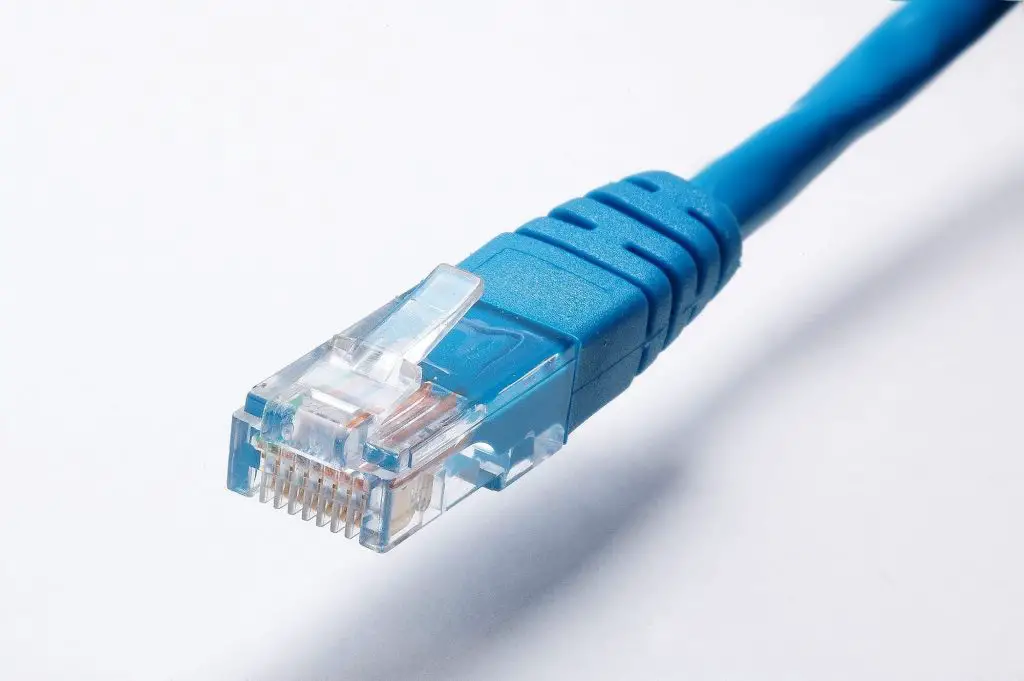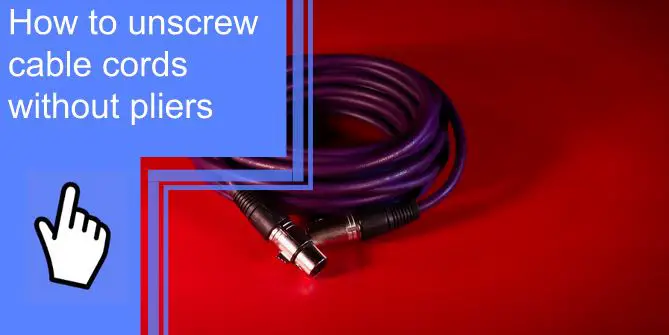What you find on this page:
Cable cords, also known as coaxial cables, are found in every modern household. These cords allow audio-visual transfers between different equipment. Despite their essential role in displaying your favorite audio-visual entertainment, coaxial cables can be a pain, particularly when attempting to unscrew them.
Coaxial cables often generate heat when transferring signals between equipment. The F connector secures the cable to its connecting system and can sometimes lock in place due to this temperature increase. The cord is already tricky to detach as it commonly sits in an inconvenient location, such as behind large furniture or equipment.
This guide will walk you through the process, so you understand how to unscrew a cable cord without pliers.
How To Unscrew a Cable Cord Without Pliers?
Unscrewing a coaxial cord is a challenging ordeal. For many, pliers seem like the go-to tool for situations like these. This is not recommended, however, as the squeezing pressure often damages the connecting piece on the cable.
Continue reading for some helpful instructions and tips that do not involve pliers.
1. Turn the Equipment, So You’re Facing the Connection, if Possible.
As mentioned, coaxial cables are typically connected in hard-to-reach areas, like behind a TV. Blindly reaching behind and around bulky furniture will thwart every attempt to unscrew this stubborn cord. Avoid wasting your energy through failed attempts at awkward angles by properly positioning yourself.
Begin by positioning yourself as well as the furniture to provide the best access to the connection site. Depending on your situation, this might involve shifting some furniture and maneuvering so you can reach and face the connection. In the end, you will have the best success if you are in a position with easy access and visualization of the cord’s connection.

2. Remind Yourself To Turn the Connector Counterclockwise.
This is your reminder that unscrewing requires a counterclockwise motion. Though this might seem like an unnecessary tip, it can save you a great deal of trouble. Avoid making your task more difficult by accidentally screwing the cable tighter.
3. Attempt To Loosen the Connection by Hand First.
Before grabbing any tools, attempt to loosen the coaxial cord with your hand. Grasp the hexagonal piece, called the nut, between your fingers, and try to unscrew it in the counterclockwise direction. Be sure to twist only the nut and not the cord itself.
If you can turn the nut, continue this motion until you detach the connection.
4. Apply Gentle Torque With a 7/16 in (11.1 MM) Cable Wrench if Needed.
The next step when unscrewing a stuck cable cord is to turn the hexagonal nut with a cable wrench. This standard two-ended wrench has one end open and the other closed and should easily and securely fit over the nut. Again, be sure to turn using the open end.
Using the wrench, begin rotating the nut with gentle counterclockwise torque. If it begins turning, apply a few more rotations with the wrench until it becomes loose enough to finish the disconnection by hand.
If the nut does not budge, refrain from applying increased force with the wrench. Additional forceful attempts run the risk of damaging the cable. Instead, try the following step.
5. Use an F-connector Tool or Channel Locks (But Not Pliers) As Alternatives.
An F-connector refers to the coaxial connector. F-connector tools are tools specifically designed to fasten and loosen coaxial cables. An internet search will produce a wide array of F-connector tools that should resolve your stubborn connector.
A pair of channel locks, or slip-joint pliers, is another alternative that might already be in your toolbox. Be mindful that the squeezing pressure has the potential to damage the connector, so apply gentle turns.
As previously stated, standard pliers are not a proper tool to use in this case.

How To Remove a Coaxial Cable Lock?
Follow these steps to remove the coaxial cable lock.
Step 1: Insert Tissue Paper Between the Lock and the Cable
Begin by inserting tissue paper between the lock and the cable.
Step 2: Add a Pen Cap Clip Inside the Tissue
Now that you have placed the tissue paper, grab a pen cap clip and place it inside the tissue paper. Be sure it is wedged between the lock and the cable so it has a sturdy connection to the cable when removing the lock.

Step 3: Press the Pen Cap & Remove the Lock
Your final step is to press on the pen cap clip and begin rotating it counterclockwise. This should allow you to unscrew the two pieces and remove the lock from the cable.
How Do You Loosen a Coaxial Cable Nut Without a Wrench?
There are multiple ways to go about unscrewing a stuck cable cord without a wrench. Always begin by angling yourself to provide the most accessibility to the connection site. You can start by attempting to unscrew it with your hands.
Once you have exhausted this method, grab your toolbox. Useful tools for this task are F-connector tools and channel locks. Avoid using pliers as they can damage the hexagonal nut. Using your tool, attempt a counterclockwise rotation.
Another method you might try involves penetrating oil. Penetrating oil (or penetrating lubricant) is available at any hardware store. Using a dropper or squeeze bottle, add a few drops to the connection site. These drops should be right up against the hexagonal nut.
The recommended wait time is anywhere between 15 and 45 minutes. Generally, the longer you give the oil to seep into the connection and act as a lubricant, the better. After waiting, use your tool of choice to attempt a counterclockwise turn.

How To Remove a Cable Cord From the Wall?
Unscrewing a cable cord from the wall involves the same steps as unscrewing it from any other connection. First, try using a conventional cable wrench to rotate the nut counterclockwise. If the cable doesn’t budge after trying the wrench, look for other tools, such as an F-connector tool or a pair of channel locks.
Call a cable technician or electrician for last-resort assistance if these tools do not do the job.
How To Remove Coaxial Cable From Modem?
In this case, proceed through the same steps outlined above. Hopefully, the modem is easier to maneuver for easy access to the connection site.
First, try unscrewing the connection by hand in a counterclockwise direction. Then, opt for a standard 7/16 in (11.1 mm) cable wrench. Apply a gentle torque using the open end of the wrench. Other tools, such as F-connector tools, can also prove effective for this task.
How Do You Get a Stuck Cable Cord Out?
There are a variety of tools on the market that are great for loosening a stuck coaxial cord. Try a standard 7/16 in (11.1 mm) cable wrench first, as this is one of the most effective tools with a low risk of damage to the cable. Use the wrench to rotate the hexagonal connector counterclockwise.
If this does not solve the problem, opt for other tools, such as F-connector tools or channel locks. Avoid pliers as they run the risk of damaging the cable cord.
Conclusion
Stuck cable cords are inconvenient, bulky, and frustrating. They tend to get stuck due to the heat generated within the cord. In addition, the temperature rise can cause the nut to lock in place.
Given that most coaxial cables are already located in hard-to-reach spots, trying to unscrew a stuck cord is a nightmare.
Before calling an electrician, try the at-home methods outlined above for unscrewing a cable cord that won’t budge. Hopefully, this guide has helped you understand how to unscrew a cable cord without pliers.
Frequently Asked Questions
There are multiple methods worth trying that don’t involve a cable wrench. For other tools, look for an F-connector tool or a pair of channel locks. Avoid using pliers. If all else fails, try a few drops of penetrating lubricant.
The go-to tool for the job is a standard cable wrench. Most professionals use this to fasten coaxial cables, so they are great for unscrewing the cable.
Apply a gentle counterclockwise rotation using the open end of the wrench. Other tools you can try are F-connector tools and channel locks.
A standard 7/16 in (11.1 mm) cable wrench is what most people already have in their toolbox. This wrench is used when fastening a coaxial cable connection and is also used to unscrew it.
You will see professionals using this tool due to its efficiency and low risk of damage to the connection.
F-connector tools are designed specifically for the task of loosening and fastening F-connectors. Follow the steps outlined above to twist an F-connector.




